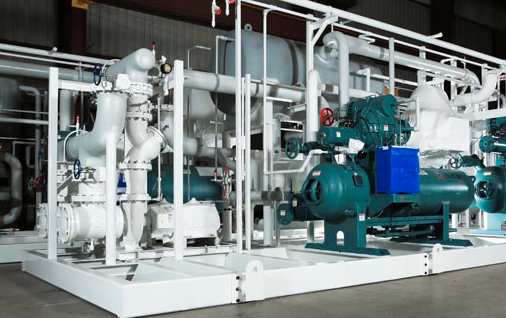This is the last year that R22 can be manufactured in or imported to the United States.
As a reminder, here’s the timeline according to the EPA final rule:
- On January 1, 2018, R22 production dropped 30% from the 2017 supply to 9 million pounds
- On January 1, 2019, production dropped 55% from the 2018 supply to 4 million pounds
- On January 1, 2020, R22 will be phased out completely with no new or imported R22 allowed in the U.S.
If your refrigeration system uses R22, you have some decisions to make — and the clock is ticking.
Since R22 will no longer be manufactured or imported into the U.S. by the end of this year, the market will be relying on existing stock or recycled R22. It’s unclear what will happen to the availability and price of R22, but If history repeats itself and responds in a similar way to the CFC phaseout, supplies are likely to dwindle and the price is likely to go up.
It should also be noted that when it comes to enforcing refrigerant regulations, there has been a shift from federal to state management.
So what options do you have? It’s important to know what equipment you have and develop a strategy to minimize cost and downtime. Several options exist, and decisions should be made based on several factors:
- Age of the equipment
- Leakage rate of the equipment
- Ease of retrofit
- Ease of equipment replacement
- Funds available
Here are some options:
1. Continue to run on R22
This may be a viable option for smaller pieces of equipment that are in good condition, well-maintained and leak-free. Continuing to maintain and operate this equipment may be the best short-term solution.
2. Planned replacement of R22 with a non-ozone-depleting refrigerant
R22 equipment that has been well-maintained, functions well and has significant life left, could be a candidate for a planned refrigerant changeout. There are several refrigerants that can be used with minimal effort, in some cases, such as FreonTM MO99 (R-438A) for A/C applications and OpteonTM XP40 (R-449A) for refrigeration equipment.
Ammonia is another conventional choice when it comes to a R22 refrigerant changeout. The goal of a refrigerant changeout is to continue to operate the equipment for its full expected life cycle. In some cases, a retrofit may be as simple as changing both the oil and refrigerant; however, certain system designs may require an engineering redesign and equipment replacement.
You may also have a system where a retrofit may be too expensive and difficult. In this case, a proactive upgrade or equipment replacement may be the best option.
3. Proactively upgrade the system
The most economical option may be replacing your R22 system with a similar system that uses a non-ozone-depleting refrigerant with lower global warming potential (GWP).
Options include OpteonTM XP40 (R-449A), XP10 (R-513A) and perhaps even XP30 (R-514A), depending on the equipment design. Other natural refrigerants such as ammonia (NH3) or Carbon Dioxide (CO2) may also be an option.
Synthetic Refrigerants
Advantages of using a lower-GWP synthetic refrigerant include:
- Familiarity — OpteonTM XP40 and XP10 use the same general type of equipment and operate at similar pressures to R22, and can be serviced by the same people that serviced the R22 system without additional training.
- Safety — OpteonTM XP40 and XP10 fall into the same safety classification as R22. They have low toxicity and are non-flammable; therefore, changes in operating practices will not be required. They also do not require time to develop enterprise resource plans (ERPs), which would be required with ammonia.
- System cost — Systems using OpteonTM XP40 and XP10 will likely have the lowest capital cost. The engine room will not need to be modified to use OpteonTM (unless there are code upgrades).
- Long term viability — OpteonTM XP40 and XP10 are non-ozone-depleting and have significantly lower GWP than some common existing HFCs. They are also the lowest-GWP, non-flammable replacements for R22. OpteonTM XP40 and XP10 are being adopted around the world for applications like A/C chillers, ice rinks, cold storage facilities and supermarkets.
Industrial gases
Industrial gases such as ammonia and CO2 are natural refrigerants and should be considered for their low environmental impact and energy efficiency.
Ammonia (NH3)
Ammonia systems are generally safe, though they are a slightly higher-risk option. Ammonia systems could be more expensive up front, but they typically cost less to maintain and operate. Some owners prefer using ammonia in facilities with less personnel (e.g., warehouses) and opt for CO2 and/or cascade systems in facilities with greater occupancy.
Carbon Dioxide (CO2)
CO2 systems operate at much higher pressures and have lower efficiency in high ambient conditions compared to ammonia systems. Due to its operating pressures, CO2 can be more expensive to install, especially for cascade systems. However, smaller bore piping — and subsequently, its reduced insulation cost — can make up much of the difference.
4. Packaged refrigeration
Low-charge packaged refrigeration is a safe, innovative solution that uses synthetic gases, ammonia or CO2 and a secondary refrigerant (such as glycol). This allows facilities to reap the benefits of these refrigerants’ excellent thermodynamic properties while minimizing the charge and risk.
This new type of system is “packaged” or “modular,” with refrigeration equipment built off-site, mounted on a structural steel base (or skid), and delivered to your plant as a self-contained, “plug-and-play” system. The operating charge of a packaged refrigeration system is minimized because it uses secondary refrigerants, which confines the ammonia to the machine room and requires only about one pound of refrigerant per ton of refrigeration.
Packaged refrigeration is just one more option when it comes to upgrading your R22 system.




